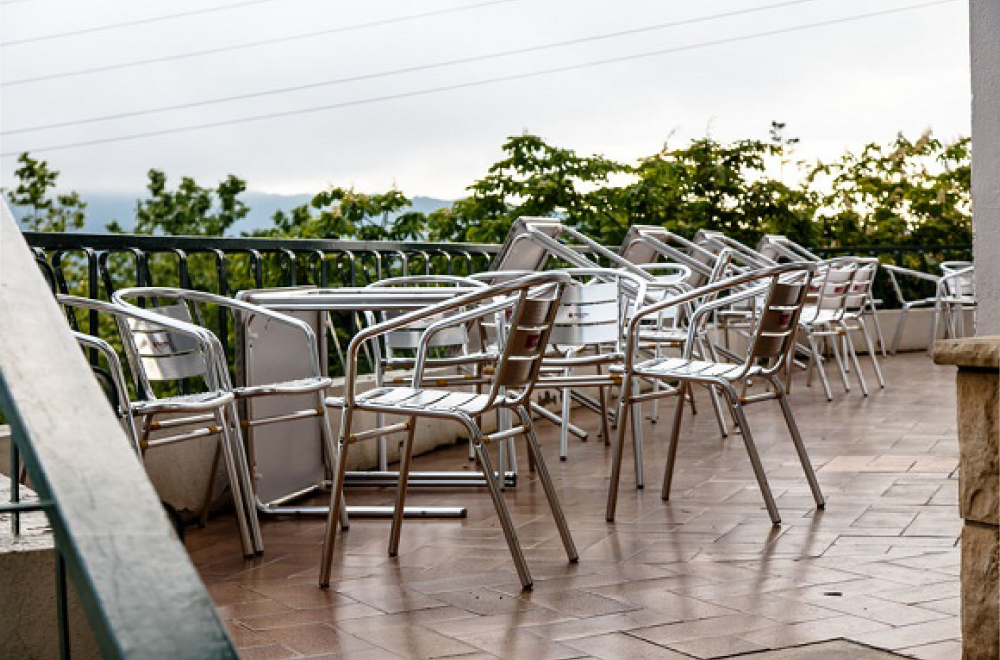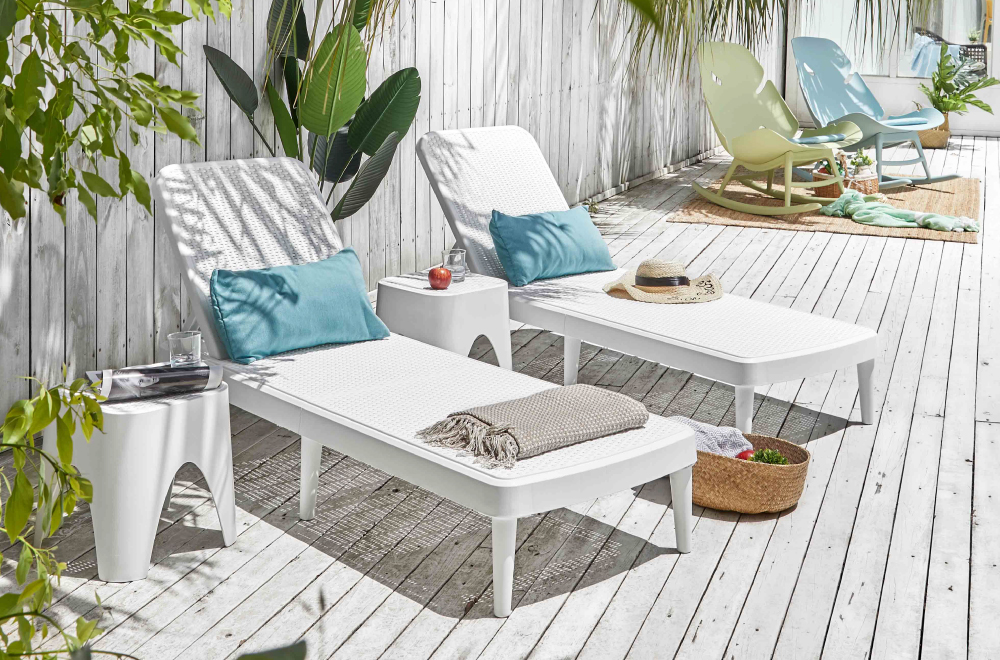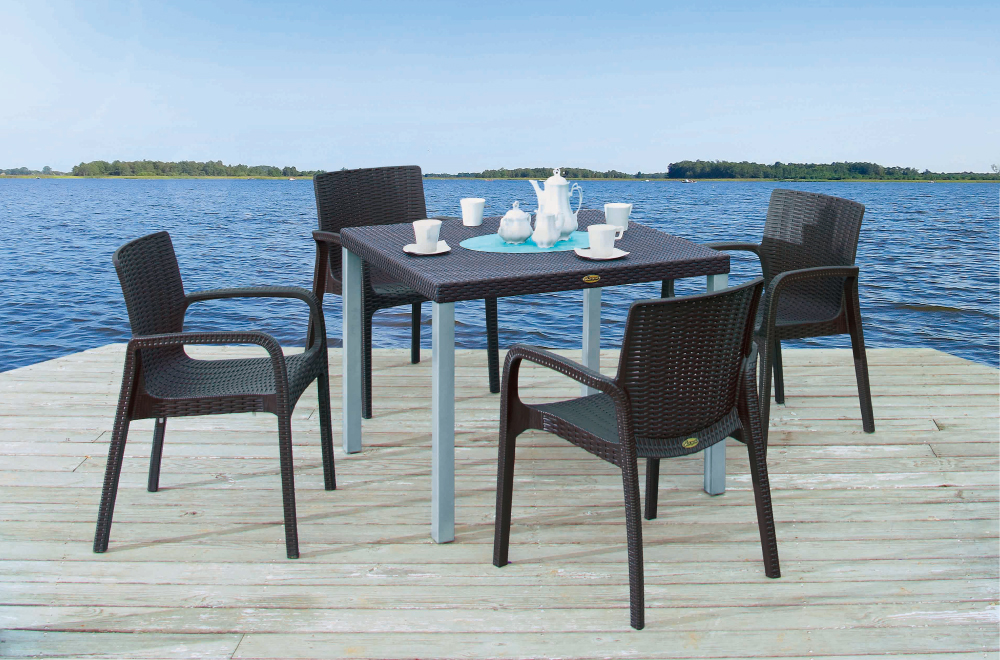Although all outdoor furniture is made to withstand the elements, some materials used in outdoor furniture can last longer in warm, humid climates than others. Read on to consider the pros and cons of popular materials for patio furniture, then choose the outdoor furniture material that suits your outdoor environment best.
1. Plastic
Plastic is both lightweight and fairly strong at the same time, which makes it a common the material for outdoor furniture. In addition, the design and color variation are almost unlimited (excluding only material that is transparent). Thanks to the inherent specific of low water absorption and chemical resistance, plastic furniture remains in good shape even in places with excess moisture, salt water and stains. Also, the color does not wear out as time passes, because it is intrinsic to the material. And, best of all, no maintenance is required.
Pros:
a. Minimum maintenance is needed
b. Easy to clean and can be washed by hose and dish soap
c. Easy to move and store, due to its inherent light weight
d. No mildew, mold, rot, or rust will develop, even in a high-moisture environment
e. Withstands rain, humidity, salt water, and extreme temperatures
f. A scratch or cut will only make plastic become brighter instead of exposing primer, since the color is inherent in the make-up. Thus, it needs neither paint nor sealants
Cons:
a. Lighter models might be flipped over by high wind
2. Resin Wicker
Though it looks like natural plant material, this is made of resin, instead. The resin wicker is both longer-lasting and stronger than the natural material, especially when used outdoors. It is also known as all-weather/synthetic wicker.
The outer wicker is woven over the inner metal frame (usually aluminum), which requires workers to hand-make each one, making each piece slightly different from the others.
Try to choose wicker made of High Density Polyethylene (HDPE), for HDPE has greater strength, durability and heat endurance than PVC.
Pros:
a. Minimum maintenance is needed
b. Provides softer surface feeling and style is the same as genuine wicker
c. Easy to move and store thanks to its light weight
d. Lots of design options, thanks to the mainly hand-made manufacturing method
e. Withstands rain, humidity, salt water, and extreme temperatures
Cons:
a. Wicker might loosen or break off after heavy or long-time use; once broken, it is very hard to restore its original condition
b. Uneven surface might require more effort to keep clean
c. Lighter ones might be flipped over by high wind
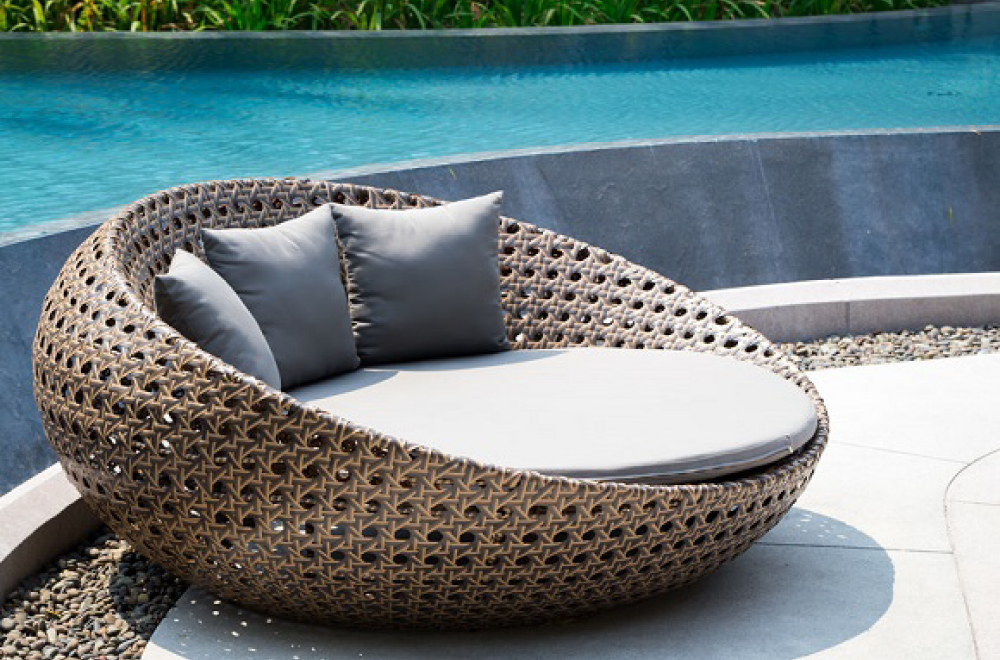
3. Aluminum
Genuinely speaking, aluminum doesn’t rust like iron or steel, but it is prone to corrosion. It is one of the common materials used in making outdoor furniture. However, aluminum corrosion becomes aluminum oxide, a hard material that protects the aluminum from further corrosion. Therefore, aluminum resists rust, moisture and the elements better than other metals. Aluminum is strong and light at same time, so it is easy to rearrange and store.
Pros:
a. Minimum maintenance is needed
b. Easy to move and store, thanks to its light weight
c. Resists rust and moisture damage better than other metals
d. No mildew, mold or rot will develop, even in a high-moisture environment
e. Withstands rain, sunlight, humidity, salt water, and extreme temperatures
Cons:
a. Aluminum is softer than iron and steel, so a strong impact might dent it
b. Might be flipped over by high wind
c. Heats up in the sun, thus becoming uncomfortable to touch
4. Wood
The natural grain beauty of wood furniture increases as it naturally ages. Softwoods like pine and cedar offer a certain degree of weather resistance; on the other hand, hardwoods like white oak, teak and shorea are resistant to the elements, enduring rotting and insects much better.
Pros:
a. Provides a warmer, casual feeling with its natural tone that only increases as time goes by
b. Withstands sunlight and wind
Cons:
a. Takes some effort to move and store, due to its weight
b. Regular maintenance with varnishes or other coatings is recommended to keep it from worms, weathering, cracks, splits, warps or turning gray
c. Mildew, mold or rot might grow on it in a moist environment

5. Iron
Iron has a unique appearance along with significant sturdiness, strength and weight. Although it is heavier, stronger and cheaper than aluminum, it easily rusts in moist climates if paint or coatings are not applied, so it has declined in popularity recently.
Pros:
a. Extremely stable and firm due to its heavy weight; no need to worry about strong wind
b. Withstands sunlight, wind and extreme temperatures
Cons:
a. Heavier than aluminum; it takes effort to move and store, due to its heavy weight
b. Regular maintenance is needed to keep it from rusting
c. Heats up in the sun and thus uncomfortable to touch
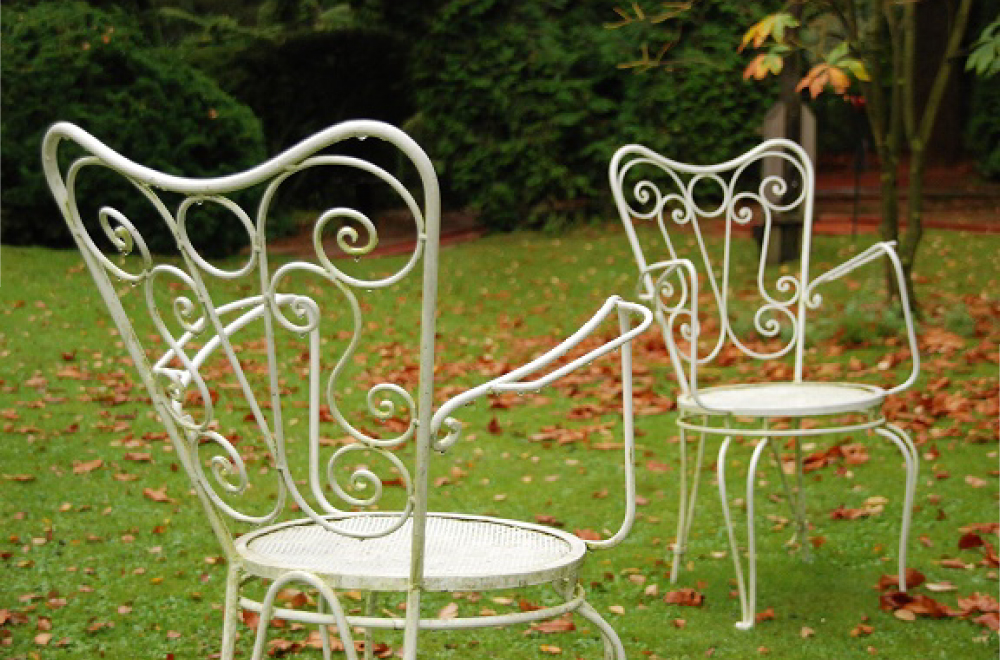
6. Steel
Since the strength of steel is greater than iron, structures made of steel can be thinner than iron but equals in strength, so steel furniture can be made lighter than the iron variety. That being said, steel is heavier but stronger than aluminum. Steel is usually used to make high-end tables and chairs, along with other large size outdoor furniture where more strength is required.
Pros:
a. Steel has a good balance between weight and sturdiness compared to iron
b. Steel is less prone to rust than iron
c. Withstands sunlight, rain, humidity, wind and extreme temperatures
Cons:
a. Heavier than aluminum, takes some effort to move and store
b. Check once in a while to avoid rust
c. Heats up in the sun, thus uncomfortable to touch.
